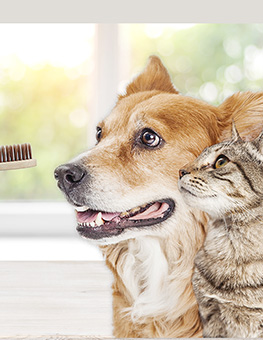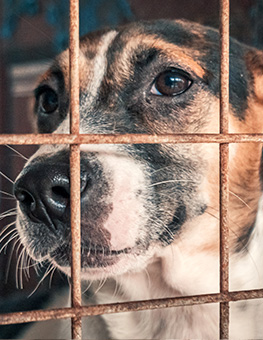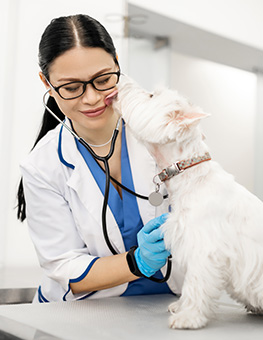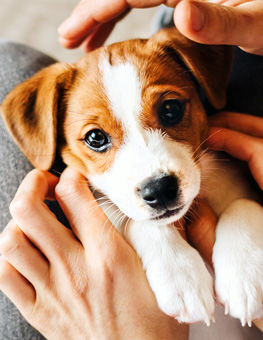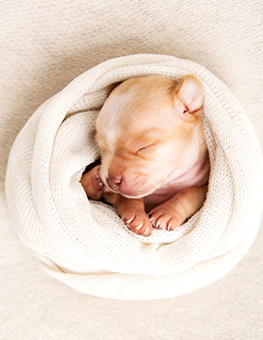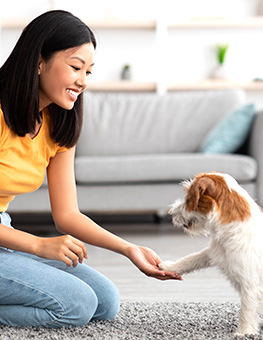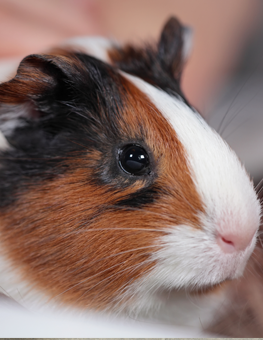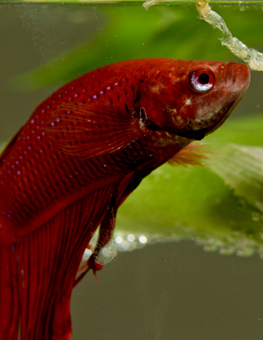Crate Training Your Dog
While a crate might seem like a cell to you, it can be a haven for your dog when he is trained properly.
Crate training is an effective and versatile way to train your dog to control and manage his behavior. By giving your dog a confined space he can get accustomed and attached to, you can keep him safe and sound while you are out, as well as give him a place to learn the rules of the house before getting turned loose. Your dog’s crate should not be his permanent place of residence, but instead should be used as a tool to create better behavior and to give him a place to go when you can’t watch over him.
Getting Started
When beginning crate training, you’ll need to start off with a few pet supplies. The most important of these is, of course, the crate. Depending on how big your dog is, the size of the crate will vary. Since part of crate training involves house training, the idea of using the crate is that your dog naturally will not do his business where he will be sleeping. Thus, the crate should be large enough for your dog to lie down, stand up straight, and turn around, but not much bigger than this. If your dog can sleep on one side of the crate and use the other side as a bathroom, the crate is too big.
As for other pet supplies, you will need certain items to make the crate more appealing and homey for your dog. You can lay down a blanket or towel to make it more comfortable, and you may need your dog’s favorite toys to entice him to use the cage.
Beginning the Crate Training
Before you start crate training, remember that patience is the key to success. Some dogs take to a crate right away, while other dogs may always remain reluctant to use it. This means the process could take between a few days and a number of weeks. Here’s how to get started:
- Introduction: When you get the crate, place it somewhere busy and accessible in the house. Allow your dog to familiarize himself with it, perhaps enticing him with some toys and treats. Make sure the door is open or even removed, and remember that some dogs will use the crate right away while others will need more of a push.
- Closing the Door: To get your dog to stay in his crate, you will need to start feeding him his meals there, making sure he goes all the way in by placing his food bowl at the back of the crate. Once he gets in and begins to eat, you can close the door behind him, keeping it closed only until he finishes. Each successive meal, though, you can keep the door closed for longer and longer periods of time.
- Crating on Command: Once your dog is eating his meals in the crate, you can try to have him enter his crate on command, using an order accompanied by a treat and a guiding hand towards the crate. Once he enters, close the door and let him stay there for about fifteen to twenty minutes. Gradually lengthen this time period, while making sure your dog stays comfortable and unafraid.
- Living the Crate Life: Once you’ve got the crate command down and your dog is comfortable being crated for a half hour or more, you can begin to leave him there for longer periods of time, as you go out of the house during the day and eventually overnight.
Crating Guidelines
Now that you’ve got your dog using his crate without fear or fuss, you need to keep in mind how the crate should be used.
- Don’t crate too long. Your dog can last in the crate overnight, but during the day, he should only be in there for five hours or less. This time period is lower for puppies, as well, who should not be crated for much longer than an hour or so until they are a few months old.
- Crating should never be used to punish your dog. This will hinder the crating process.
- If your dog shows signs of separation anxiety, crating should be used infrequently and only when absolutely necessary.
- Once your dog has become well-mannered enough to roam the house when you’re gone, ordering him to the crate should be unnecessary, and he will use it at his leisure.



